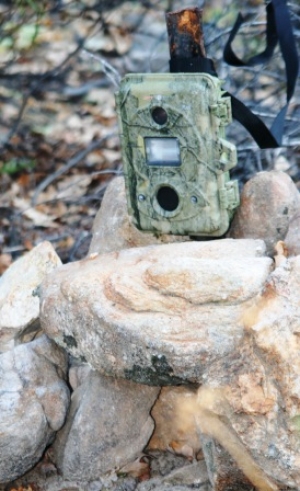Wherever humans overlap predator ranges there is inevitably potential for direct or indirect harm to wildlife and human livelihoods. Coexistence between predators and humans on shared landscapes is possible, but requires close scrutiny of mitigation methods that have surprisingly up to now received little attention in terms of scientific testing.
This is a good time to introduce our new team. Having recently arrived from Canada to work with the Cape Leopard Trust, Bogdan Cristescu and Kristine Teichman have committed 3 years to tackle this sensitive issue.
Kristine and Bogdan have travelled and carried out research in Africa before coming here to begin this new CLT project and are fascinated by the natural and cultural heritage of our vast land and have learned about the challenges (and opportunities) of wildlife-human coexistence in this part of the world. Through the extensive dedication and efforts of the Cape Leopard Trust, a research team has now been put together with the goal of understanding the ecological mechanisms behind predator-human conflict and investigating methods of conflict alleviation. For real mitigation measures to be effective, the involvement of different stakeholders and comprehensive knowledge of stakeholder dynamics towards wildlife-human conflict is necessary. For this reason the project involves a collaboration of several universities both within and outside of South Africa (Universities of Bristol, Cape Town, Stellenbosch and Victoria), as well as government regulating bodies, NGOs and farming communities. The project aims to cover multiple farming areas as well as formally protected reserves in South Africa’s Western and Northern Cape, spanning multiple biomes including the Nama Karoo, Succulent Karoo and Fynbos.
During May Quinton took the team on a week long field trip covering over 2,500 km visiting farmland and protected areas to get a feel for what lay ahead. Amongst other things, some of the challenges faced by farmers when it comes to the fragile balance of predator management were made clear. Often despite intensive predator control, small livestock including sheep and goats are still affected by predation by caracal, jackal and leopard in some regions of the Cape.
The projects’ overarching aim is to facilitate coexistence between farmers and predators by providing an ecological evidence-base for various human-predator conflict mitigation methods. We will use empirical data on predator ecology and an experimental approach to test non-lethal conflict mitigation methods. The CLT makes a point of avoiding making assumptions based on anecdotal data or hearsay.
With wildlife-human conflict being prevalent worldwide in situations where wildlife intersects the interests of humans, this project has broad relevance from an ecological, socio-economical and animal welfare perspective. The implementation of specific mitigation measures will of course depend upon evidence of their effectiveness, willingness of stakeholders to implement them and appropriate licensing and legislation. We firmly believe that solutions will only arise by working together towards a common goal of reducing livestock depredation and at the same time enabling biodiversity conservation. The team is looking forward to getting started, and we hope to share news and experiences of this work along the way.

















